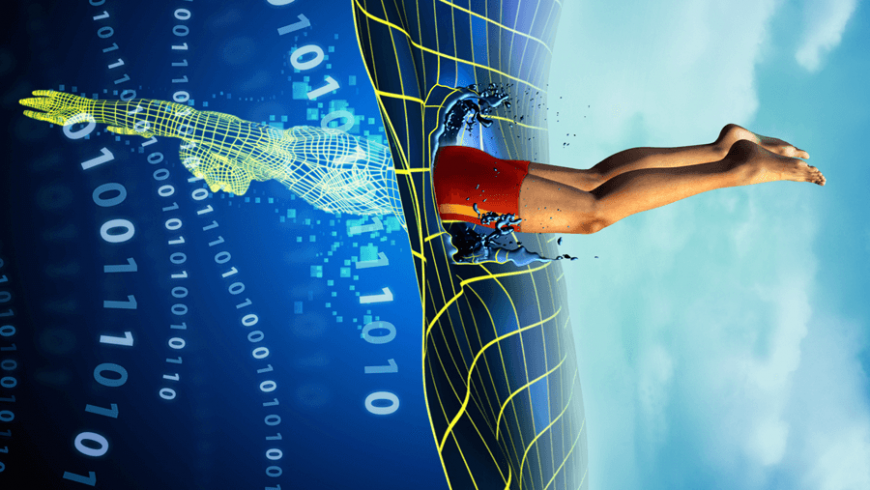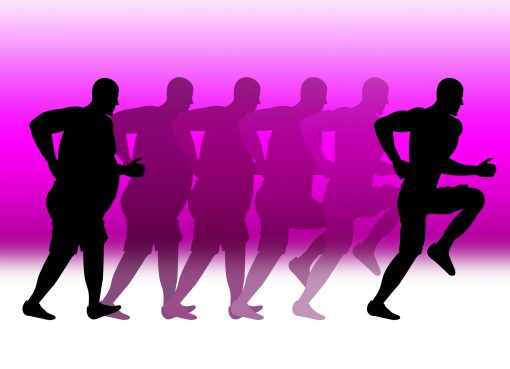Won FIRST PRIZE
[In Essay Competition Held on the Occasion of National Science Day Celebration, 2018]
Human beings have a basic instinct of gaining more comfort in their daily life. They want the best ways for recovery from diseases or to get a luxurious life. They want to travel maximum distance in shortest period possible or to communicate with dear ones, staying at a long distance. They want all those stuffs which make life luxurious. Science and technology are helping human population with many ways.
Here we will discuss about certain major fields where science plays a big role like- Human health, communication and information technology and Travel & transportation.
1. Human health –
The recent developments in the field of medicine have seen remarkable progress. Since Human Genome Project has released detailed information about human genome, the impact of science and technology has arguably been more effective than ever. New discoveries and inventions have opened up new possibilities in both the treatment and prevention sickness, like cancer and HIV/AIDS.
Here, a list of some recent discoveries that could play a major role in the future welfare of human health-
A. Robot Surgeries-
Using tiny metal hands deep inside a patient’s body is proving to be beneficial for surgical purpose now-a-days though it is not been available widely till now. The greatest benefit of tiny openings gives shorter and less painful recovery time. Also used to improve the accuracy of procedures, like in cancer cases..Robotic tools also offer the potential for surgeons to operate on patients remotely, which would reduce the costs of travel and other barriers towards receiving specialized care.
B. Preventing HIV-
HIV/AIDS kills around 1.8 million people a year. A recent study in journal Blood presents a potentially new way to combat the disease. Rather than killing the virus, make the body resistant to it. Scientists from the Imperial College London & Johns Hopkins University exposed the HIV virus by removing cholesterol content from the cell wall of it, creating a hole in the virus’s membrane and making it vulnerable, which in turn led to a stronger response by the immune system.
C. Cellular Leapfroging-
Scientists have developed a process of converting the existing cells into a totally new form. Fully matured hepatic cells from mice have been used to prepare functional neuron at the Stanford University recently. It was the first time that cells were shown to leapfrog from one different tissue type to another.
Such advancement could be beneficial for transmuting potentially dangerous or cancerous agents into benign cells.
D. Amyotrophic lateral sclerosis-
It is a fatal neurodegenerative disease that paralyzes the man. A new Northwestern Medicine study has identified a similar cause of all forms of Amyotrophic lateral sclerosis. The cause of the disorder is an interrupted protein recycling system in the neurons of the spinal cord and the brain. In ALS, the recycling system of the protein building blocks is disrupted. The cell can’t repair or maintain it and becomes severely damaged. This discovery can lead to the end of one of the biggest medical mysteries of the 20th century.
E. Stem Cell Research–
The human body is comprised of 200 specialized cells such as muscle cells, nerve cells, fat cells and skin cells. All of these cells in the body come from undifferentiated cells known as stem cells. The process of specialization is called differentiation. Stem cells can be used to cure a lot of health issues like- traumatic brain disease, Parkinson’s disease, Alzheimer’s disease, baldness, blindness, deafness, wound healing, diabetes, amyotrophic lateral sclerosis etc. New drugs based on stem cells are being developed. With the cheaper and efficient means of manipulating stem cells, new options are opening up for researchers looking to generate new tissue or organs in a lab itself.
F) Synthetic Cells-
Dr. J. Craig Venter, co-mapper of the human genome, created life in the lab and developed totally new synthetic cells using a painstaking of stitching together the chemicals that compose DNA, he synthesized the genome of a bacterium, and inserted into a cell and it was replicating. Scientists could speed up vaccine production keeping artificial versions of different viral strains of influenza or generate brand new strains of diseases to experiment on if the original host is inaccessible.
2. Information Technology–
Cultures, Charts or history of the patient–all of this information are a must in diagnosing and preventing diseases, and modern medical colleges are struggling to manage and utilize the data. The internet and information technology has actually changed the way of medical practice. Those days are gone when people wasted their time in a medical library, looking for topics, writing down the references, going to the stacks and pulling the volumes of journals. Now, medical records, case files, and volumes upon volumes of critical medical information and references are available anywhere anytime.
Information technology has been one of the most cheering research areas throughout the world over the past two decades. From commerce, science, healthcare, education and leisure to environmental management, information technology is essential and will continue to stimulate further advances in all facets of human accomplishments.
Information technology consists of-
- Artificial intelligence
- Computational neuroscience and bioscience
- Cloud computing
- Decision support systems
- Evolutionary computing
- Human computer interface
- Information retrieval
- Intelligent agent and web applications
- Intelligent business computing
- Intelligent control and automation
- Intelligent fault diagnosis
- Intelligent sensor networks
- Knowledge discovery and data mining
- Next generation Internet
- Machine learning theory and methods
- Pattern recognition
- Reasoning and expert systems
- Soft computing
- Speech, image, and video processing
- Virtual reality and human-computer Interaction
Here are some new technologies that may dominate the upcoming era and may be helpful for the welfare of the mankind-
A. AR and VR-
We’ve already seen some major steps for augmented reality (AR) and virtual reality (VR) technology in 2016. We have already seen some devices and tech for these applications, but it’s going to be next year before we see things really take off human welfare.
B. Machine Learning-
It has taken some huge strides forward in the recent time, even emerging to aid and improve Google’s core search engine algorithm. But we’ve only seen a limited range of applications of machine learning. In near future machine learning might become a kind of new best friend with public expecting this type of intelligence as a part of every form of technology.
C. Automation-
We have seen robotic journalists in action for a couple of years now, and we can expect it won’t be long before they make another leap into more practical types of articles. When it is combined with machine learning, stuffs can improve even faster for our benefits.
D. Humanized Big Data. (visual, empathetic, qualitative)-
It has been a giant topic for the past three years, when it started making headlines as a buzzword. Mass numbers of data can help us in providing better medical treatments to execute better marketing campaigns. But big data’s supreme power -its quantitative or numerical foundation is also a weakness. We can see advancements to humanize big data, seeking more empathetic and qualitative bits of data and can project it in a more visualized, accessible way.
E. Physical-Digital Integrations-
Smartphone devices have been adding technologies into our day to day lives. It’s almost impossible to see people without a smart phone at any given time, giving us access to practically infinite information in the real-world. Now-a-days, it is a daily affair like purchasing, enabling consumers to buy online and pick up products in a physical location, but the next level will be even further integrations between physical and digital realities. Some famous Online brands like Amazon or flipkart will start having more physical products, like Dash Buttons, and physical brands like Walmart may start having more digital features, like store maps and product trials which will help people in their day to day life.
3.Travel and transportation– Many recent developments occurred in the field of Travel and transportation which are proving to be helpful for the people in their daily life. Some of them are-
A. The Internet of Things-
The Internet of Things assumes that all men and objects can be linked through networks to each other. These useful networks could potentially play an important role in many aspects of our daily driving:
-
Planning of a route – Sensors present in the vehicle can communicate with GPS to determine the desired route, which is then displayed on a display that physically directs the driver to drive the car.
-
Prevention of vehicle collision – Sensors can alert the riders to the positioning of other vehicles around it and may prevent road accidents. The cars can even override the driver controls to avoid an accident.
-
Safety – sensors in the seat belt can track the driver’s physiological parameters and decide whether the driver is fatigued or fit. If the driver fails any of the tests performed by the sensors, the vehicle becomes inoperable.
B. Autonomous Cars-
Self-driving driving cars like the Google car and Telsa are making the concept of autonomous cars a reality. Several, states across the country have begun passing laws to regulate the technology and encourage its development. However, the safety of these autonomous vehicles has been an issue of public interest and concern. In short future, this technology may provide a good alternative to human drivers, with additional safety, economic and environmental benefits. Removing human control from the vehicle will potentially help cars reach their designed fuel economy, leading to less gas consumption and reduced cost of vehicle ownership.
C. Lightweight Vehicle Materials-
Vehicle manufacturers are trying to deliver vehicles with high performance and better efficiency. Studies have shown that reducing the weight of the vehicle by as little as 9-10% can improve fuel economy by almost 6% or more. The focus of lightweight materials research is to move away from cast iron and steel. The components to replace these metals in the near future are magnesium aluminum alloys, and carbon fiber etc which are already been used in racing cars. However, doubts still exist about the materials, whether they can resist the accident forces and whether manufacturers will be able to produce lightweight materials at a cheap cost for automakers.
D. On-Demand Ride Services-
Less than two- three years ago, transportation services like UBER or OLA dramatically changed the way people in large cities find transportation. With only a cell phone app, riders can summon a vehicle to their location, any time they want it. The services have eroded the profits of cab companies and decreased the difficulties of transportation of the public.
E. Hyperloop-
One of the most ambitious technologies changing transportation is the SpaceX’s Hyperloop. The concept is a pneumatic tube that uses a series of linear induction motors and compressors to propel vehicles at super fast speeds. Hyperloop would be used to connect two cities of the United States (Los Angeles and San Francisco) and allow completing the 360-mile trip in almost thirty minutes. Time will tell if the Hyperloop’s technology will be the future of long-distance travel. However, the project’s private funding limits the impact on government spending. Little changes into the existing methods of transportation may have a good impact in the near future, while the introduction of completely new technology, like the Hyperloop, might change the face transportation in a better way.
The dark side of technology-Technology has advanced almost to the peak. It improves the quality of lives of human beings and helps in decreasing the burden of human at work or at home. Technology also increases the lifespan by better health care. It minimizes the distance between people around the world. All these show advanced technology is good to us. However, technology can be a curse to mankind. It causes great impact on environment and society.
Advanced technology is the culprit of pollution. Air-conditioners are turned on throughout the year. Vehicles emitting carbon fumes are running on the road day and night. Vehicles are consuming many natural resources which are non-renewable. AC and the refrigerators are also polluting our air, leading to global warming and the formation of the hole in the ozone layer. Another curse to mankind is the problem of obesity. In the past, people used their labour to earn a living.
The mean for them to travel was walking. With modern technology, people mostly sit in their home or office because less labour work is required as it is done by computers or machines. In leisure time, people can sit in an air-conditioned room and watch television. When they want to travel to other places, they can take a car or a bus. People of the current era do less physical exercise but due to mass production, people can enjoy better food with good nutrients. That’s why obesity is a serious issue in many countries and overweight people are prone to many fatal diseases like heart attack.
Disasters may be brought about by advanced technology. Scientists try to invent stuffs in order to help all of the mankind. Their intentions are good but unfortunately some of their inventions may be exploited. Take bombs as an example. A great scientist, Nobel, invented the dangerous atomic bomb for good intention only. However, it was used in the Second World War, causing millions of deaths in Japan. Technology is also used to develop deadly weapons like nuclear weapons or bio-weapons. When these weapons are used, it is assumed half of the world’s population will disappear.
Many claim that modern technology is minimizing the distance between people all over the globe. It may be true in the sense that we can reach others more conveniently by using mobile phones or internet. However, these devices cannot develop real relationship. To maintain a good relationship with others, face-to-face contact, tones and non-verbal communication are also important elements. People nowadays use e-mail to communicate with their friends staying at the other part of the globe. Their main tool is words. Some may even make friends on the net. They may have known for over five years but they will not recognize each other when they go on the street. We cannot consider this kind of relationship as real. Also, now-a-days scientists are claiming that different types of radiations that are emitted by the cell phone networks are playing a big role in causing cancer.
All in all, technology does bring harm to human beings. But the benefits given by modern technology cannot be ignored totally. We should apply technology wisely and help the poor countries. Governments should also stop using technology threaten their enemy countries. Thus the latest developments in modern science can provide a lot of benefits if we use it carefully and with the purpose of well being of mankind.
Dr. Simanta Koushik M.V.Sc. 2nd year Dept. of Animal Biotechnology College of Veterinary Science. Khanapara, Guwahati-22




